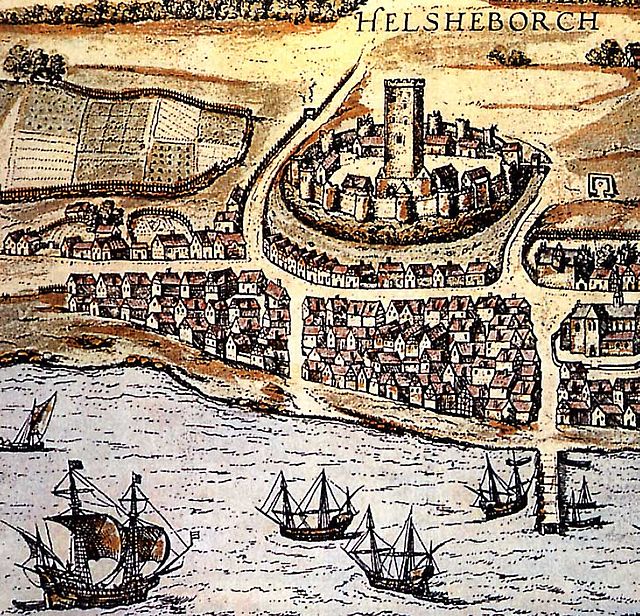Danish-Hanseatic War (1361-1370)
The Danish-Hanseatic War (1361–1370) was both a trade and territorial conflict mainly between the Kingdom of Denmark, led by King Valdemar IV, and the Hanseatic League, the latter of which was led by the rich and powerful merchant city of Lübeck. Though the first few years of the war resulted in several Danish victories, and even led to a beneficial truce for Denmark in 1365, the Hanseatic League, furious at the terms of the truce, resumed hostilities along with several allies and managed to defeat the Danes.
Valdemar IV of Denmark enters Visby
King Valdemar IV of Denmark
Artwork depicting the Scanian city of Helsingborg in 1588. Though anachronous, it shows the relevance of the city as a port
The Treaty of Stralsund
The Hanseatic League was a medieval commercial and defensive network of merchant guilds and market towns in Central and Northern Europe. Growing from a few North German towns in the late 12th century, the League expanded between the 13th and 15th centuries and ultimately encompassed nearly 200 settlements across eight modern-day countries, ranging from Estonia in the north and east, to the Netherlands in the west, and extended inland as far as Cologne, the Prussian regions and Kraków, Poland.
Northern Europe in the 1400s, showing the extent of the Hanseatic League
Ubena von Bremen, a replica of the Bremen cog
Hanseatic Seal of Elbing (now Elbląg)
The Holstentor of Lübeck, built in 1464, is the only historic gate of the city still standing today.








